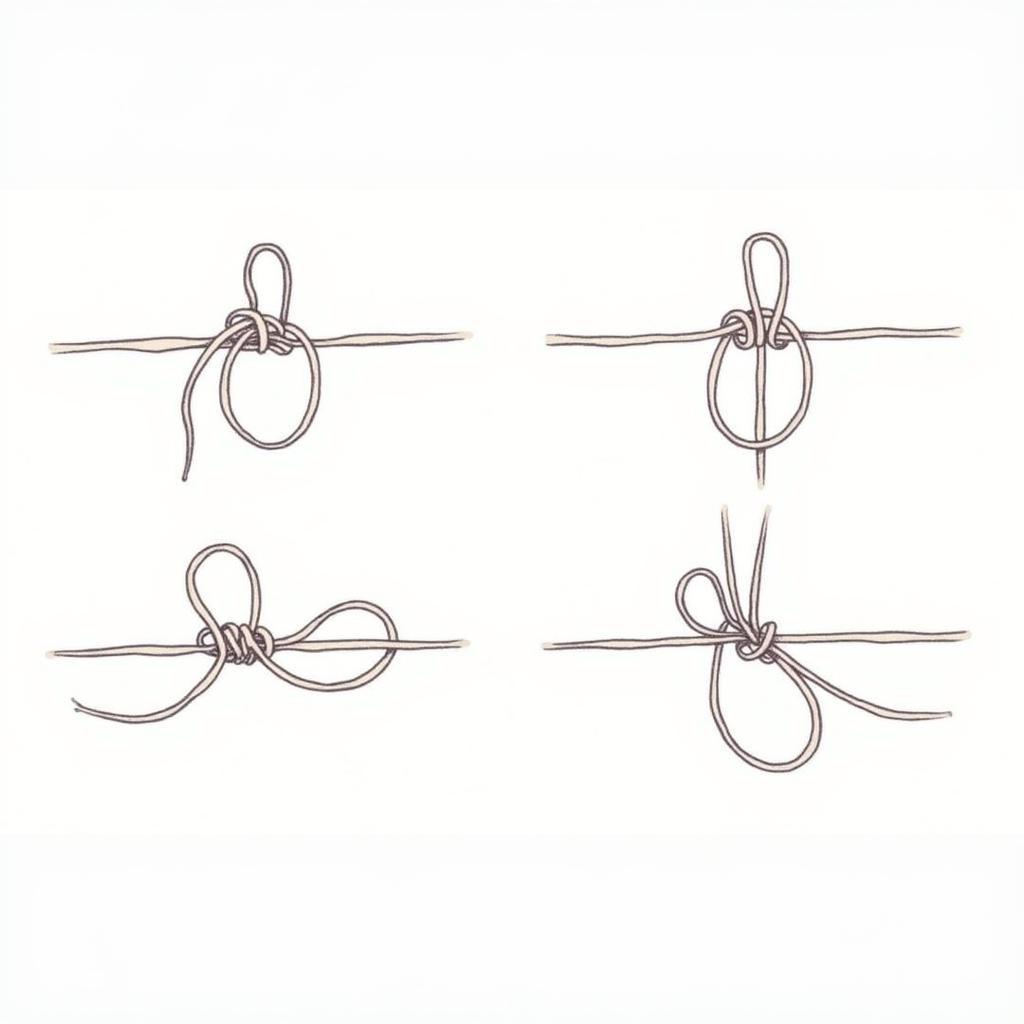Knot-tying skills, seemingly simple, are crucial life skills that help children and adults feel more confident in daily life. From tying shoelaces and gift ribbons to handling emergencies, this skill offers many practical benefits. Immediately after learning how to tie knots, you’ll realize its convenience. Learning how to teach children to tie shoelaces will help your child become more confident.
Why Knot-Tying Skills Are Important?
Knot-tying is more than just creating a simple knot. It cultivates dexterity, patience, and concentration. For children, learning to tie shoelaces is a significant step in developing independence. They will feel more confident when they don’t need adult assistance. Additionally, this skill helps children develop logical thinking and problem-solving abilities.
Basic Types of Knots
There are many different types of knots, each suitable for a specific purpose. Here are some basic knots you should know:
- Overhand Knot: Easy to learn, often used for temporary fastening.
- Square Knot: More secure than an overhand knot, suitable for tying shoelaces.
- Bow Knot: Commonly used for decorating gifts.
- Fishing Knot: Used in fishing, requiring precision and dexterity.
Simple Shoelace Knot Tying Guide
- Create two loops with the two shoelace ends.
- Bring the left loop over and under the right loop.
- Pull both ends tight.
How to Teach Children Knot-Tying Skills?
Teaching children knot-tying skills requires patience and appropriate methods. Start with simple knots and use colorful shoelaces to attract children’s attention. Encourage them to practice regularly and praise their efforts. Learning 5 core skills of a tutor will give you more effective methods to teach your child.
Knot-Tying Skills in Emergency Situations
In some emergency situations, knot-tying skills can be extremely useful. For example, you can use rope to secure a wound, create a drag line to move objects, or make a rope ladder for escape. Knowing how to tie secure and quick knots can help you handle situations effectively.
“Mastering knot-tying skills not only helps children become independent but also equips them with important life skills to cope with unexpected situations.” – Nguyen Van An, Education Expert.
Knot-Tying Skills in Outdoor Activities
Knot-tying skills are indispensable in outdoor activities such as camping and mountaineering. It helps you pitch tents, tie objects, and create rope systems for safe climbing. Mastering different types of knots will help you fully enjoy your adventures. Improving skills to handle situations in the office will help you feel more confident.
“Knot-tying is a practical life skill that everyone should know. It not only helps you in daily life but can also save your life in dangerous situations.” – Tran Thi Binh, Survival Skills Trainer.
Conclusion
Knot-tying skills are important and useful life skills. Start learning and practicing knot-tying today to feel more confident in any situation. Learn more about how to tie skill straps and the most important skill in teamwork.
FAQ
- How to tie shoelaces quickly?
- What are the common types of knots?
- How important are knot-tying skills in life?
- How to teach children to tie knots?
- Where can I find materials for learning knot-tying?
- In which fields are knot-tying skills applied?
- Which knot is the most secure?
Description of common question scenarios.
Many young people, especially young children, often have difficulty tying shoelaces. Tying knots tightly and correctly is also a concern for many people. In outdoor activities, choosing the right type of knot is also very important.
Suggestions for other questions, other articles on the website.
You can find more information about other soft skills on our website. Some useful articles include: “Effective Communication Skills”, “Time Management Skills”, “Teamwork Skills”.
